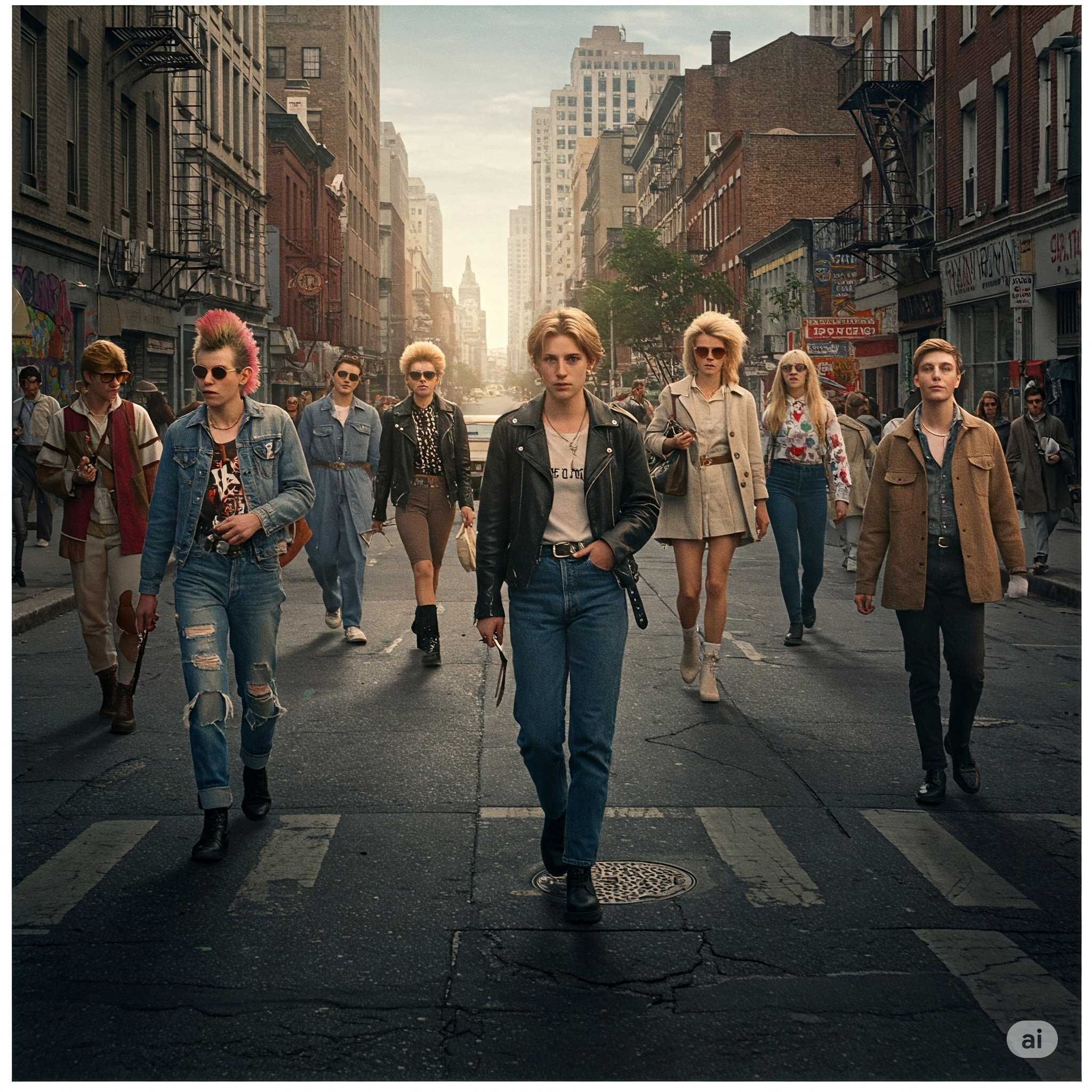Street style, once a fringe phenomenon born from subcultures and urban landscapes, has undergone a remarkable evolution to become a significant force in the global fashion industry. What began as authentic expressions of identity and rebellion on the streets has now permeated high fashion runways, influenced designer collections, and become a powerful marketing tool for brands worldwide. Understanding this evolution requires tracing its roots, examining its key moments, and analyzing its current impact.
The early seeds of street style can be found in the post-World War II era, with the emergence of youth subcultures like the Teddy Boys in Britain and the Beatniks in America. These groups used clothing as a visual language to express their distinct identities and often their dissent from mainstream societal norms. Their styles, characterized by specific silhouettes, fabrics, and accessories, were organically developed on the streets, far removed from the dictates of Parisian couture houses.
The 1960s and 70s witnessed a further explosion of street style movements, fueled by social and political upheaval. Mod culture in London, with its sharp tailoring and Vespa scooters, punk rock’s anti-establishment aesthetic, and the bohemian styles emanating from counter-culture movements all contributed to a growing recognition of the street as a legitimate source of fashion inspiration. Photographers began to document these looks, capturing the raw energy and individuality of everyday people expressing themselves through clothing.
The advent of the internet and digital photography in the late 20th and early 21st centuries marked a turning point for street style. Suddenly, the ability to capture and share these looks became democratized. Fashion blogs and social media platforms emerged, providing a global stage for individuals to showcase their personal style. Figures like Scott Schuman of The Sartorialist gained prominence by documenting the unique and inspiring outfits of ordinary people encountered on the streets of fashion capitals. This shift empowered individuals and challenged the traditional top-down approach of the fashion industry.
The rise of fashion weeks as highly publicized events further amplified the influence of street style. While the runways showcased designer collections, the streets outside became a spectacle in their own right. Editors, buyers, influencers, and fashion enthusiasts donned their most creative and eye-catching ensembles, turning the sidewalks into a vibrant catwalk. These looks, often photographed and shared instantly across the globe, began to exert a significant influence on trends. Designers started to pay close attention to what was happening on the streets, incorporating elements of street style into their collections.
This cross-pollination between high fashion and street style has become increasingly pronounced. Luxury brands now collaborate with streetwear labels, and sneakers, once relegated to athletic wear, are a staple in high-fashion wardrobes. The blurring of lines between formal and casual wear, a hallmark of contemporary street style, is evident on runways worldwide. This phenomenon reflects a broader cultural shift towards greater inclusivity and a more fluid understanding of personal style.
The rise of social media influencers has further cemented the importance of street style. These individuals, often with large and engaged online followings, showcase their personal interpretations of fashion, influencing the purchasing decisions of their audience. Their ability to connect directly with consumers and create relatable content has made them powerful players in the fashion landscape.
However, the commercialization of street style has also raised questions about its authenticity. As brands increasingly leverage street style for marketing purposes and influencers are often sponsored to wear specific items, the spontaneous and rebellious spirit that once characterized it can feel diluted. The pressure to create visually striking and photographable outfits for the “street style set” can sometimes overshadow genuine personal expression.
Despite these concerns, the fundamental power of street style as a reflection of cultural trends and individual identity remains. It continues to be a dynamic and evolving phenomenon, shaped by social movements, technological advancements, and the ever-changing ways in which people choose to express themselves through clothing. From its rebellious beginnings to its current mainstream influence, street style has undeniably left an indelible mark on the fashion world, demonstrating the power of individual expression and the constant dialogue between the runway and the real world. Its future will likely continue to be shaped by new technologies and evolving cultural landscapes, but its core essence – the authentic expression of self through fashion – will undoubtedly endure.

